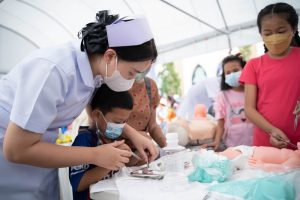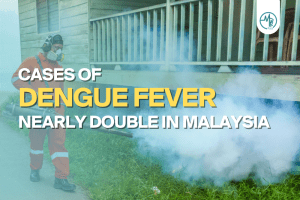Tuberculosis, a long-standing global health threat, has recently resurfaced in Singapore, prompting increased awareness and prevention efforts.
We explore the nature of tuberculosis and effective strategies for its prevention, particularly in the context of the recent outbreak in Singapore
The Historical and Global Context of Tuberculosis
Tuberculosis (TB), a disease that has afflicted humanity for millennia, continues to be a significant health challenge globally, particularly in Asia. Archaeological evidence indicates the presence of TB in human societies for over 4,000 years. Despite medical advancements, TB remains a prominent health concern, especially in developing regions.
The World Health Organization (WHO) reported that in 2020, the South-East Asia (SEA) Region, which houses 26% of the world’s population, accounted for a staggering 43% of the global TB incidence. In that year, approximately 4.3 million people in this region fell ill with TB, with around 700,000 deaths, representing more than half of the global TB deaths estimated at 1.3 million. In Singapore, TB has been a persistent issue. Over the past 16 years, the incidence of TB has ranged between 30 and 40 cases per 100,000 people.
Understanding Tuberculosis: Nature and Impact
TB, caused by the bacterium Mycobacterium tuberculosis, is a serious infectious disease primarily targeting the lungs, although it can affect other body parts. It is transmitted via airborne particles, typically when people with the active disease cough, sneeze, or spit. The WHO estimates that about a quarter of the global population has been infected with TB bacteria, but only 5-10% of these individuals will eventually develop symptoms and active TB disease.
Singapore’s Response to Tuberculosis: Prevention and Management
Singapore’s approach to tackling TB involves a combination of public health strategies, including early detection, treatment, and community education. The country’s TB control program emphasises regular screening, particularly for high-risk groups, and prompt, effective treatment for those diagnosed. This strategy aligns with the WHO’s recommendation of early detection and treatment as key to controlling TB.
Additionally, Singapore invests in public health education campaigns to raise awareness about TB, its transmission, and prevention methods. These campaigns are crucial in dispelling myths and misconceptions about the disease, encouraging people to seek medical attention for symptoms, and promoting practices that reduce transmission risk, such as good respiratory hygiene.
The recent TB cases in Jalan Bukit Merah have prompted intensified screening efforts in the affected area, reflecting Singapore’s proactive and adaptive response to emerging public health challenges.
Individual and Community Strategies for Tuberculosis Prevention
To effectively prevent TB, both individual actions and community-wide efforts are vital. Individuals can reduce their risk of TB by practising good respiratory hygiene, such as covering their mouth when coughing, and ensuring proper ventilation in living and working spaces. Regular health check-ups and TB screenings, especially for those in high-risk groups, are also crucial.
Communities play a pivotal role in TB prevention through public health initiatives like vaccination campaigns and education programs about TB transmission and prevention. Additionally, improving living conditions, such as reducing overcrowding and enhancing air quality, is essential in areas with high TB prevalence.
In the context of Singapore’s recent TB outbreak, these strategies become even more important. Community engagement and adherence to public health guidelines can significantly impact the effectiveness of TB control efforts.
Steps for Preventing Tuberculosis Infection
To effectively prevent TB infection, individuals can take several actionable steps:
- Practice Good Respiratory Hygiene: Cover your mouth and nose with a tissue or your elbow when coughing or sneezing.
- Maintain Healthy Living Environments: Ensure proper ventilation in homes and workplaces to reduce the risk of airborne transmission.
- Undergo Regular TB Screenings: Especially important for those in high-risk groups or living in areas with higher TB prevalence.
- Stay Informed: Educate yourself about TB symptoms and transmission, and seek medical advice if symptoms appear.
- Support Community Health Initiatives: Participate in local TB prevention programs and vaccination drives.
Singapore’s proactive stance in combating TB, particularly in light of the recent outbreak, serves as a model for public health management. The country’s comprehensive approach, which combines early detection, effective treatment, and community engagement, is pivotal in controlling the spread of TB. By adopting individual preventive measures and participating in community health initiatives, residents can play a crucial role in breaking the chain of TB transmission. This collective effort is essential for maintaining public health and ensuring the well-being of all community members in the ongoing battle against TB.
References
- Tuberculosis. (2019, May 17). https://www.who.int/southeastasia/health-topics/tuberculosis
- Science Talk: Is tuberculosis still a problem in Singapore? (2022, May 27). The Straits Times. https://www.straitstimes.com/singapore/health/science-talk-is-tuberculosis-still-a-problem-in-singapore
- Number of tuberculosis cases Singapore 2012-2021. (2023, December 13). Statista. https://www.statista.com/statistics/963035/number-of-tuberculosis-cases-singapore/












